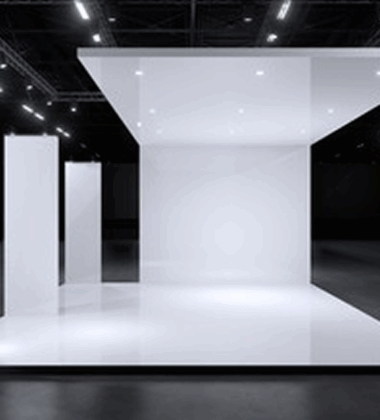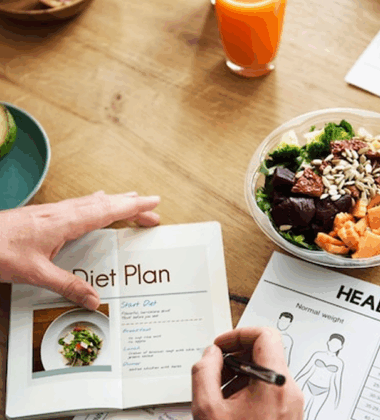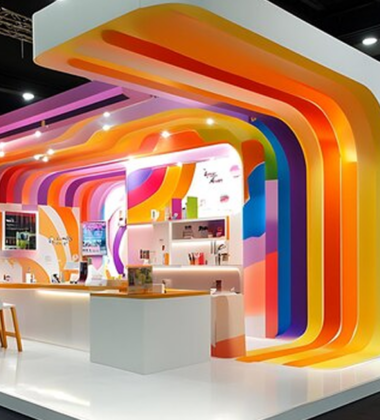In the buzzing atmosphere of the Food and Beverage Expo USA, brands invest heavily in booth design, visuals, and giveaways. But when it comes to creating lasting impressions that actually drive purchase behavior, there’s one tactic that consistently outperforms the rest: experiential food sampling. Why? Because it taps into human psychology in ways static displays never can.
Food is inherently emotional. From the first taste to the lingering afterglow, flavors and textures imprint themselves on memory—and when executed strategically, sampling can boost consumer engagement in ways that generate both buzz and ROI. In this article, we’ll explore the science behind why food sampling works, how to optimize it for trade shows, and what really drives brand recall and consumer decisions in these high-stakes environments.
The Power of Sensory Memory in Consumer Behavior
The link between sensory experience and memory is one of the most powerful in psychology. According to numerous studies, taste and smell are more effective at triggering long-term memory than sight or sound, due to their direct connection with the limbic system—the part of the brain responsible for emotions and memory.
At events like the Food and Beverage Expo USA, where thousands of products compete for attention, your edge lies in creating a memorable sensory moment that reinforces your brand and product benefits.
Key Findings from Behavioral Research:
- Consumers are more likely to remember a product they tasted than one they only saw or heard about.
- Flavor congruence (the alignment of taste with brand messaging) increases the likelihood of post-expo purchase.
- Positive sampling experiences enhance trust, perceived value, and emotional connection with a brand.
The takeaway? Sampling isn’t just a giveaway—it’s a strategic engagement tool grounded in behavioral science.
What Defines High-Impact Food Sampling?
Not all tasting stations are created equal. The difference between a forgettable nibble and an unforgettable experience lies in how the product is presented, contextualized, and emotionally framed.
Elements of Successful Experiential Sampling:
1. Multi-Sensory Activation
Engage more than just the palate. Add aroma cues, texture contrasts, and visual storytelling (e.g., food being plated or crafted in real-time). The more senses you activate, the deeper the memory encoding.
2. Narrative Sampling
Don’t just offer food—tell a story. Explain the origins of the ingredients, the purpose of the flavor profile, or the health benefits in a narrative form that aligns with your brand.
3. Consumer Engagement Touchpoints
Sampling should include interaction:
- Ask questions (e.g., “Which texture do you prefer?”)
- Provide feedback buttons or QR codes
- Offer a visual rating system or digital poll
These small interactions increase dwell time and deepen memory by requiring the visitor to process the experience.
Case Study: How One Brand Boosted Engagement by 300%
Brand: Vervana Cold-Pressed Oils
Product Focus: Flavored olive oils
Event: Food and Beverage Expo USA
Challenge: In a crowded aisle filled with culinary samples, how could Vervana stand out and drive real consumer engagement?
Solution: The brand created a Flavor Memory Station, where guests sampled oils while smelling herbs and watching a short video about Mediterranean family cooking traditions. After tasting, they were asked to describe the flavor using pre-written sensory cards and vote for their favorite.
Results:
- 3x more booth visitors than the previous year
- 70% of tasters scanned a QR code for a discount
- 45% subscribed to their email list on-site
Why It Worked: By combining narrative, multisensory cues, and interaction, Vervana turned a simple tasting into a memory-making experience that extended beyond the booth.
Tasting Design Strategies for Higher Consumer Engagement
Here’s how to upgrade your sampling strategy and make your booth at the Food and Beverage Expo USA truly unforgettable:
1. Create an Emotional Hook
Tie the product to a universal feeling—comfort, nostalgia, indulgence, or adventure. For example:
- “Try the cookie that tastes like grandma’s kitchen.”
- “Sip the smoothie that took 5 years of R&D to perfect.”
2. Use Anchoring to Influence Perception
Present your product alongside a comparison sample or a known benchmark (e.g., a standard salsa vs. yours). This encourages visitors to evaluate your product more thoughtfully, increasing retention.
3. Label the Flavor Experience
Give names to the experiences people are having:
- “This is our ‘Midnight Crunch’ bar.”
- “Try the ‘Coastal Citrus’ olive oil.”
Named experiences stick better in memory and become part of your brand’s lexicon.
4. Offer Sampling Journeys, Not Single Bites
Design a taste journey with 3–4 small items that build on each other. Label them as steps in a story or levels in a flavor profile. This encourages lingering, emotional build-up, and storytelling opportunities.
Behavioral Insights to Guide Your Sampling Design
If you want to go deeper into the psychology, consider these principles of consumer engagement:
The Peak-End Rule
People remember the peak moment and the final moment of an experience more than the rest. Structure your sampling with this in mind:
- Peak: Most unique flavor or surprise (e.g., unexpected spicy note)
- End: Memorable takeaway or small gift (e.g., recipe card, coupon)
Effort Justification
If a visitor has to do a little work to get the sample (e.g., spin a wheel, answer a question), they’re more likely to value it more and engage longer. Make the interaction just challenging enough to create a reward loop.
Social Proof Triggers
Highlight real-time engagement:
- “300+ people have tried this today!”
- “Top pick of Day 2 at the Expo!”
These cues reinforce the idea that your booth is worth stopping for.
Turning Samples into Long-Term Brand Equity
Sampling is the start, not the end, of the relationship. Build on the engagement with follow-up content that reminds attendees of the positive sensory moment you delivered.
Tips for Post-Expo Engagement:
- Send “Thanks for tasting!” emails with a short recap video
- Retarget visitors with social ads featuring the exact product they sampled
- Offer limited-time discounts with messaging tied to the expo (“Loved it at Booth #218? Bring it home!”)
Tie all of this back to the emotional memory formed during the expo.
The Future of Sampling: Experience First, Product Second
The most successful exhibitors at the Food and Beverage Expo USA understand that they’re not just offering products—they’re offering moments. And those moments, when engineered through thoughtful consumer engagement, can turn casual browsers into loyal customers.
As the food and beverage industry becomes more competitive and more digital, real-world engagement strategies like experiential sampling provide a critical human touch. When people taste something delightful while hearing a story, smelling complementary scents, and being invited to reflect—it sticks.
It drives memory. It drives emotion. And most importantly, it drives purchase.





